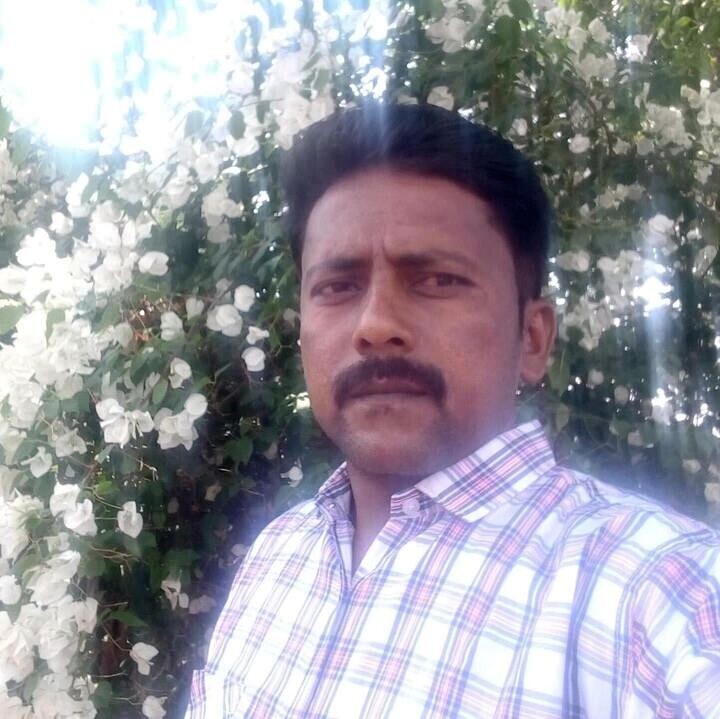Satish Shidagoudar, a 38-year-old farmer from Belagavi’s Shirur village, is popularly known as the ‘bitter gourd specialist’ in that region because he harvests 50 tonnes of the vegetable every year on 1.5 acres of land.
Although he comes from a family of farmers, it was not his first choice of profession. He wanted to become a teacher.
“In 2008, after acquiring a double degree in Bachelor of Arts and Bachelors of Education, I began looking for a teaching job. When I finally found an opportunity, I was asked to pay a bribe of Rs 16 lakh, for a monthly salary of Rs 16,000. While my father was willing to take a loan to pay the bribe, I refused the job and decided to join him and my uncles on the field,” he begins.

But, instead of following his father’s traditional methods of farming, Satish decided to do things differently, and implement new techniques which would increase productivity and generate better income.
“My father, Nagappa, and his brothers, have been farming various vegetables for the last 50 years, but they were barely able to generate any profits. The yield and quality were always poor. After joining them, I implemented advanced techniques to cultivate vegetables such as drip irrigation for proper water management, and creating plant beds to retain moisture. I learnt these techniques from books and other farmers who were practising it,” says Satish.
Not only did Satish learn new techniques of farming, he also studied market demands closely.
“Although there was a high demand for bitter gourd, only a few farmers cultivated it in Shirur. In recent years, people have woken up to the fact that the bitter vegetable has numerous medicinal benefits and helps in lowering bad cholesterol levels and controlling diabetes. I started with a trial round and used 10 guntas (0.25 acres) of land to grow my first patch,” says Satish.
He used the same farming techniques he was using for his other crops—drip irrigation for water management, and mulching the base to create small plant beds, which not only prevents weed growth but also increases moisture retention capacity.
“The trial round was a success. Within a few months, there were full-grown bitter gourds ready for harvest,” says Satish.
Following this, he moved on to a bigger piece of land. He carved out 1.5 acres from 5 acres of land to grow bitter gourd round the year and used the remaining 3.5 acres to grow sugarcane.
“First, I prepared the land by ploughing 3 or 4 times to make the soil fine, and remove weeds. Then, I mulched the base and created plant beds to sow the saplings. Each plant bed has 3 healthy seedlings growing. Thirdly, I installed a drip irrigation system and sprinklers to ensure the crops get the right amount of water, in regular intervals. They need to be watered on alternate days, and a drip system is the best choice to utilise water effectively. Since these plants are creepers, I also erected pandals using bamboo shoots,” says Satish.
Harvesting 50 tonnes of Bitter Gourd Every Year
“Through the year, I conduct 30 harvests, and each time I get around 1.5 to 2 tonnes. By the end of the year it reaches 50 tonnes. One tonne is sold at Rs 35,000, but it varies according to the market demand. Last year, it was sold at Rs 48,000 per tonne. During harvest season, I earn Rs 25,000 every day which is way more than what I would have earned from any other job,” says Satish
But reaching here was not an easy journey. Satish says he had to experiment with various pesticides and micronutrients to ensure his crops grew healthy.
“Initially, many plants would suffer from diseases such as powdery mildew that I never anticipated. Powdery mildew is a fungal infection that causes white or yellow patches on the leaves. Then, I started adding micronutrients, fungicides such as Carbendazim, and organic pesticides that mainly contain neem, to ensure they avoided any sickness and grew healthy,” he says.
Today, Satish is glad that all those years ago, he stood his ground and refused to pay the bribe, because that is what got him started on his successful farming journey.
“I hardly invested Rs. 1.5 lakhs but I have earned several times more than the initial investment. I believe, with a little smart work, and a lot of determination, anyone can achieve anything,” he concludes.
(Edited by Gayatri Mishra)
Like this story? Or have something to share?
Write to us: contact@thebetterindia.com
Connect with us on Facebook and Twitter.
If you found our stories insightful, informative, or even just enjoyable, we invite you to consider making a voluntary payment to support the work we do at The Better India. Your contribution helps us continue producing quality content that educates, inspires, and drives positive change.
Choose one of the payment options below for your contribution-
By paying for the stories you value, you directly contribute to sustaining our efforts focused on making a difference in the world. Together, let's ensure that impactful stories continue to be told and shared, enriching lives and communities alike.
Thank you for your support. Here are some frequently asked questions you might find helpful to know why you are contributing?

